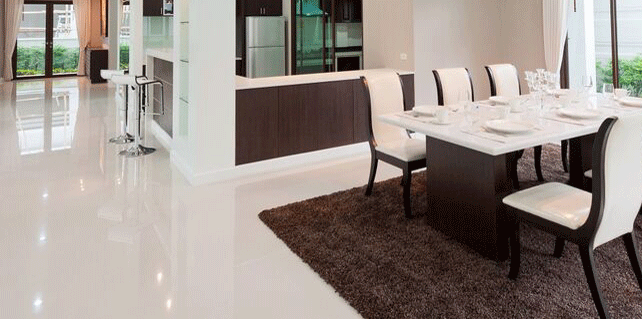Ceramic tiles have been around for millenniums. They have decorated countless homes and other buildings around the world. While the principle remains the same, the actual production line has evolved significantly with advancing technology. Furthermore, below will go a long way in answering how ceramic tiles are made.
Step 1. Raw Materials For Ceramic Tiles
First, the manufacturer collects a series of raw materials. Common materials used to produce ceramic tiles include white clay, talc, sand, feldspar, illitic and kaolinitic clay, dolomite and calcite. The manufacturer will quarry and refine them. Also, they will bring the materials to the manufacturing plant and store them separately.
Step 2. Mixing And Forming
Next, the manufacturer mixes the raw materials in specific proportions by weight. The manufacturer achieves the specified mixture by varying the speed of each conveyor before the master conveyor gathers all materials together for the next process. The conveyor then dumps the mixture into a storage tank. It then feeds that into a series of mixing tanks with water and ceramic pellets. This forms a liquid material called slurry.
They then temporarily store the slurry in large tanks. Next they feed it into an atomizer. The atomizer has a nozzle which sprays the slurry into the middle of it. A current of hot air helps the slurry becomes airborne and it quickly dries to form atomized powder.
They then release the atomized powder in measured quantities into a tray which distributes the powder evenly into a mould. A large hydraulic press then applies a force of 300-400kg/cm2. By means of high pressure and residual moisture, this process turns the powder into a solid mass. They dry these formed pieces further to remove most of the remaining moisture. This guarantees that the product will come out of the kiln in a consistent quality, free of physical weaknesses or defects.
Step 3. Glazing
Glazing and screening serve both practical and artistic purposes. These allow the tile to gain aesthetic beauty, water repellence and durability. Glazing and screening also are good for hygienic properties. First, the manufacturer uses roller screens to apply a design and colour. To achieve greater design variation, a manufacturer can add an extra roller screen to the line.
A manufacturer makes numerous test runs before accepting the final formulation. They need to verify the quality of the finish, trueness of the design and colour definition. A glaze is essentially a glass like substance and they apply it to the surface of a tile. They do this by varying methods such as by spray, waterfall, screening or dry glazing methods.
Step 4. Firing
After the manufacturer applies a glaze, the tile gets fired in a kiln. There are different types of kilns but a Roller Hearth Kiln is by far the most efficient. This kiln has outstanding temperature uniformity, cleanliness and heat efficiency. Temperatures in this type of kiln can reach as high as 1190 degrees Celsius. Kilning solidifies the glaze and removes all residual moisture in the ceramic. This completes the manufacturing stage for ceramic tiles.
Step 5. Quality Check
To ensure quality, the finished product goes through inspections, checking for any imperfections. Mechanical and human means check the calibre, shade and quality of the tiles. Information about each tile then gets used to sort and box the ceramic tiles accordingly. The manufacturer then labels these boxes with the quality, shade and calibre specifications. Then they place them on the appropriate pallet ready for dispatching.
So, that’s how ceramic tiles are made. The evolution of technology means more consistency and added aesthetic appeal to tiles. Why not consider using tiles for your next project. TFO has all your tiling needs covered at Sydney’s lowest prices.


